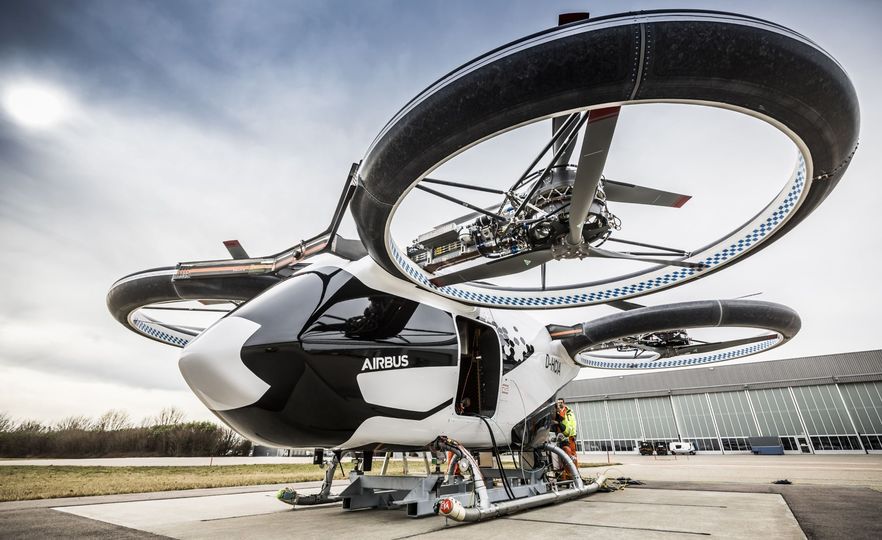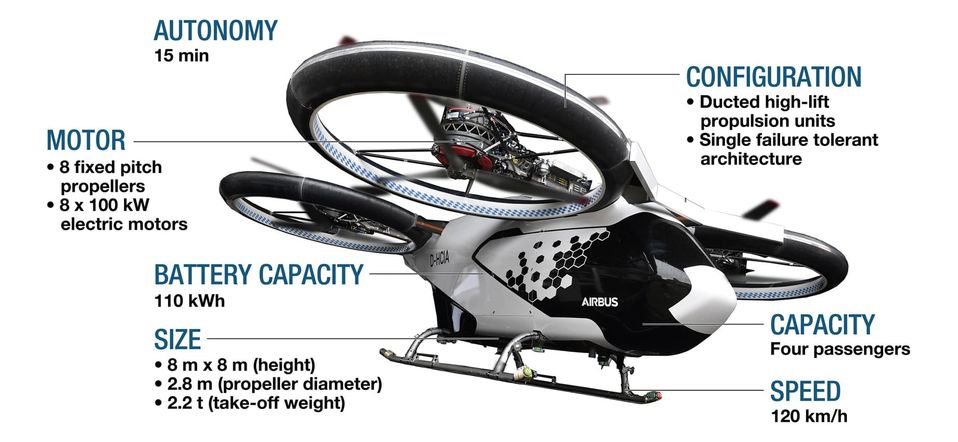Airbus’ electric CityBus NextGen is something out of Blade Runner
The swoop-winged CityBus NextGen would carry up to four passengers up to 80km in an autonomous zero-emission flight.

Like concept cars from a motor show, concept aircraft have more than a dollop of futurism – after all, their designers and engineers are literally channeling the future, based on projections of where technology is headed and what consumers will want and/or need at that undetermined time.
For Airbus, that future involves the emerging Urban Air Mobility (UAM) market, which while often described as fully-electric airborne taxis or flying Ubers, can also serve as autonomous personal shuttles for the high-flying and well-heeled.
Airbus revealed its first such concept in early 2019, with the CityAirbus demonstrator – developed by Airbus Helicopters – positioned as a multi-passenger, autonomously piloted electric Vertical Take-Off and Landing (eVTOL) vehicle intended for cities and suburbs.
Overnight, Airbus replaced the ungainly-looking eight-rotor craft with a sleek new CityAirbus NextGen that wouldn't look out of place in Blade Runner or the latest Marvel movie.
This next-generation design repackages the eight electrically-powered propellers with swoopy fixed wings and an eye-catching a V-shaped tail.
Like its predecessor, the new CityBus can carry up to four passengers in a zero emissions flight, with Airbus targeting an 80 km range and a 120 km/h cruise speed.
And Airbus claims it'll be exceptionally quiet during fly-over and landing, with the 65-70dB(A) noise levels in the same range as normal conversation or, at worst, a vacuum cleaner.
"We are on a quest to co-create an entirely new market that sustainably integrates urban air mobility into the cities while addressing environmental and social concerns," says Airbus Helicopters CEO Bruno Even.
"Airbus is convinced that the real challenges are as much about urban integration, public acceptance, and automated air traffic management, as about vehicle technology and business models."
"We build on all of the capabilities to deliver a safe, sustainable, and fully integrated service to society."
Aerospace design expert Dr Sonya Brown, from the UNSW School of Mechanical and Manufacturing Engineering, believes 'flying cars' – for want of a better description – will eventually provide another means of urban air mobility to help reduce congestion on the road.
"Long-term, flying cars will offer us another means for short and personalised travel," she says.
"Some early adopters of these technology include rideshare companies and emergency services, given some vehicles are being designed to be more versatile than traditional aircraft and helicopters (due to) the ability to both take off and land vertically and fly horizontally as well."
With the original CityBus and Vahana demonstrators having jointly conducted 242 flight and ground tests, with 1,000km of flying under their belt, Even said the CityAirbus NextGen "combines the best from both worlds with the new architecture striking the right balance between hover and forward flight."
Airbus says the CityAirbus NextGen has entered a detailed design phase ahead of the prototype's first flight in 2023.







QF
11 Jul 2014
Total posts 1024
Aerodynamics looks like it has more ability to glide with engines shutdown compared to the old model, can't wait for these to start being the new form of transport hopefully by the time the new Sydney airport kicks off in 2026.
QFF
19 Sep 2013
Total posts 209
I’m guessing that adding wings will be to reduce the motor capacity required in the original design, which from calculations, could only fly for around 50 mins before a full battery recharge is required. Presume the wind design adds a form of STOL capability.
Hi Guest, join in the discussion on Airbus’ electric CityBus NextGen is something out of Blade Runner